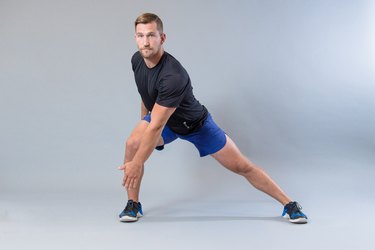
Don't let knee pain take the joy out of your usual workout! Several common exercises can cause some knee pain (like lunges, squats and jumping jacks for starters), but there are ways to modify to keep you pain-free.
"General exercise modifications include decreasing speed, increasing control or avoiding deep knee bends," says Eugene Yim, M.D., sports medicine physician with Hoag Orthopedic Institute in Irvine, California. The following nine modifications work on one or more of these principles to help keep knee pain at bay.
Video of the Day
Video of the Day
Can You Work Out With Knee Pain?
Since the source of knee pain may vary — from the bony structures of the knee joint to ligaments and cartilage — it's important to see a physician for a diagnosis before attempting exercises on your own.
"It's generally unsafe to work out through the pain if you have symptoms of instability or swelling," says Yim. Symptoms of knee instability include giving out, shifting, catching or locking up. Keep in mind that not all modifications work for all types of knee pain. So it's better to ease off when your knees start hurting during certain exercises than to push yourself and risk further injury.
Read more: The Best Workout for Bad Knees
1. Standard Lunge
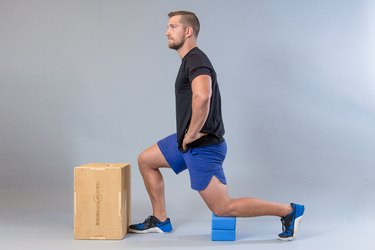
By ensuring perfect form and making a minor adjustment, you may be able to keep lunges on the roster. Michele Olson Ph.D., professor of exercise physiology at Huntingdon University, suggests the following modifications.
- Put the toes of your lead foot against a wall, making sure your other leg is as far back as comfortable. This ensures your knee does not bend too far on the lead leg.
- Place one or two yoga blocks under the back knee. This helps keep the front knee at less than a 90-degree angle.
Read more: 22 New Lunges to Supercharge Leg Day
2. Standard Squat
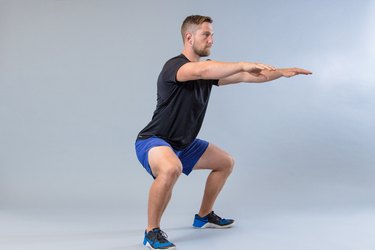
Traditional squats involve lowering your body until your thighs are parallel to the floor, a position that can trigger knee pain. Olson suggests the following modifications to lessen the risk.
- Perform half squat variations by only lowering your body part way down (only go as low as is comfortable).
- You can try the yoga chair position, an isometric half squat.
- Or position your feet in a very wide stance, toes turned out (a sumo squat). This requires you use more of your glute muscles and helps keep your knees from tracking straight forward. Instead, they'll track slightly out to the side, which reduces risk of knee pain.
Read more: 12 Essential Squat Variations to Try
3. Jumping Jacks
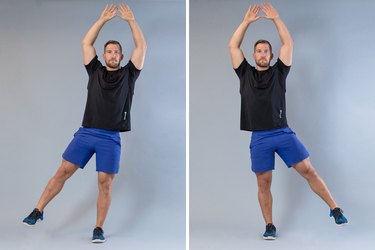
High-impact jumping jacks can be tough on weak knees. Reduce the impact by taking out the jump. Try these low-impact versions.
- Do toe-tap jacks by tapping your right foot out, then your left foot. Alternate feet.
- Or lift your left leg out to the side as you bring your arms overhead as if doing a traditional jumping jack. Set your left foot down and step your right foot in (so you're stepping to the left). Repeat on the other side and alternate.
4. Curtsy Lunge
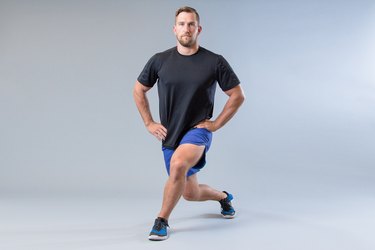
This exercise can be extremely challenging if you're experiencing active knee pain, says Yim. "In general, I would advise leaving these out of the workout if you're experiencing significant pain in the knees." Focus on controlling the movements rather than speed.
- Bring one leg two feet behind the other and to the outer side. Keeping weight in the front leg, bend to about 90 degrees in the front and back leg. Avoid too deep a knee bend and avoid flexing the knee past 90 degrees.
- Or do modified reverse lunges instead. Imagine you are standing on a balance beam with one foot directly behind the other. Only lunge halfway down.
5. Mountain Climbers
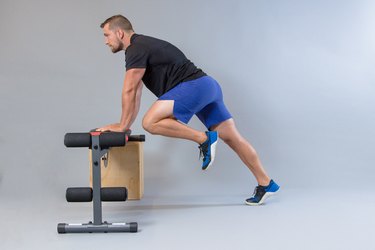
This total-body exercise can stress out your knees if done traditionally. But this modification reduces the risk of knee pain, says Pete McCall, senior advisor for the American Council on Exercise (ACE).
- Place your hands on a bench. Placing your hands higher reduces the knee angle when bringing the legs forward.
- You can also reduce how far the knee is brought forward. You're likely to experience more discomfort the closer the knee is to the chest.
- If this modification is uncomfortable, a better exercise would be walking or jogging in place without bringing knees up high, says McCall.
6. Burpee
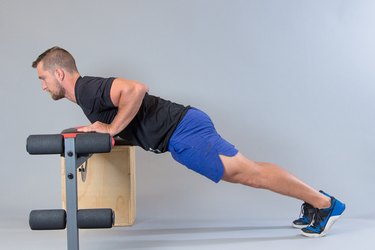
"The movement doesn't need to be fast to be effective," says McCall. You won't be able to avoid burpees with these modifications.
- Use a step platform or another stable, raised surface. This elevates the body, producing less force through the knees when performing the exercise.
- Also, try slowing it down. Slowly squat down, put your hands on the floor, and then step back one foot at a time, hold a high plank for three to five seconds, and then return to standing.
Related: 15 New Burpees You Must Try
7. Lateral Lunge

Stepping and lunging side to side can put a lot of strain on your knees. Try these modifications instead.
- When stepping out, make sure both feet are parallel as the right foot lands on the ground, and reach forward with both arms while pushing your hips behind you.
- Or, when stepping out, use your left hand to reach for the right foot. This helps improve hip flexion and reduces the amount of knee flexion.
- You can also step out slowly and lower your hips only halfway.
8. Lateral Runs

Often used in sports drills, lateral runs can wreak havoc on knees. These modifications and cues can help lessen the risk.
- Decrease your speed and use a flat ladder with rungs rather than elevated hurdles. When shuffling to the right, plant the right foot on the floor and pull yourself to the right while using the left foot to push the ground away.
- "A good shuffle is an automatic combination of half pulling with the lead foot (in this case, the right when moving to the right) and half pushing with the left foot (when moving to the right)," says McCall.
9. Glute Kickback
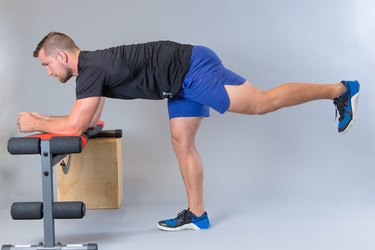
This exercise is great for shaping and toning your booty! But it can be more of a pain in the butt if it causes pain in the knee.
- Instead of placing your elbows on the ground, use a bench, keeping the knees off the ground to reduce knee flexion. Lean forward on the bench, bend the leg at the knee and push back through the heel while squeezing the glute muscles.
- Or, stand up, balance on the right foot, keep the left knee slightly bent and push back through the left heel while squeezing the glute. This activates the muscle without the need to be on the floor.